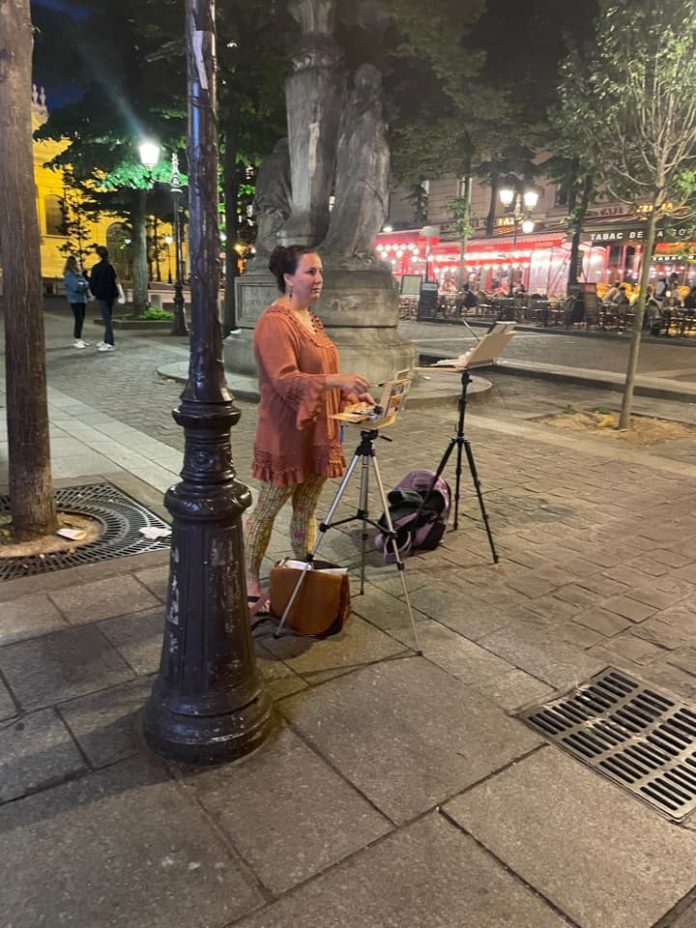
When the “time changed” for many of us in November as we set our clocks back an hour, sunlight practically became a rare gift. In the midwest, we prepared ourselves for months of overcast skies and sunsets as early as 5 pm, far from the long days of summer. But for plein air painters, there’s a positive aspect of increased darkness – the opportunity to practice painting nocturnes.
I reached out to our friends in the Dreamliners* Facebook group, as well as Carl Bretzke and Gavin Glakas, who are both well-known for their stunning night scene paintings. Here’s what Carl and our friends had to say about why they choose to paint at night (aside from the possible time change). You’ll learn Bretzke’s early inspired moments for nocturnes, and why they might be a great subject for beginning plein air painters.
Before we go any further, you might be asking, “What exactly is a nocturne painting?”
Bretzke tells us that “the dictionary usually defines them as ‘a work of art dealing with evening or night’. Personally, I think that any painting of a post-sunset light effect (sun below the horizon) would be a good definition for painters. This is because paintings with the sun above the horizon present a different set of decisions because of the sunlit land mass.” Well said!
Also, stay tuned for a future article featuring Gavin Glakas and his inspiring words!
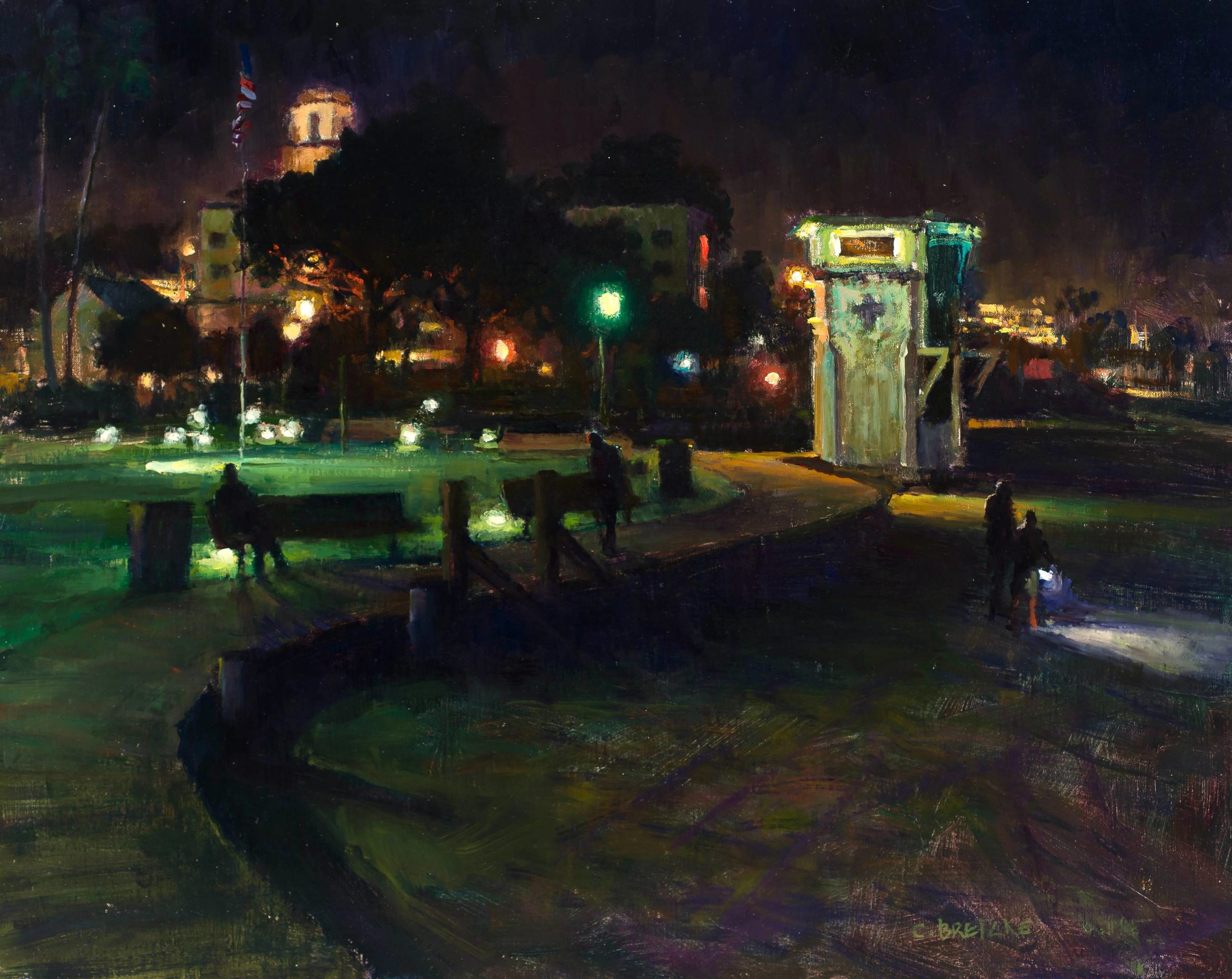
“I’ve always been a huge fan of nocturne paintings,” Bretzke said. “As a kid, I hung a poster of Hopper’s ‘Nighthawks’ in my room. In 2010 during the Carmel Art Festival (Carmel, CA), my wife and I visited one of the local art galleries and saw a nocturne by Charles Rollo Peters (a historic California impressionist). I was so impressed that thereafter I committed to painting at least one nocturne in each of my plein air events. I continue to do so today.
“Just as a bright light in the darkness attracts a person’s attention, so too does a painting of something brightly lit against a dark background. The high contrast grabs your attention from across the room. On top of that, add subtle value transitions plus prismatic color transitions away from the light sources and you will have a painting that even experienced painters will appreciate.
“I’ve also discovered that nocturnes are not that difficult to paint since the dark areas typically don’t require too much detail and usually represent large areas of your canvas. Additionally, because you are not dealing with moving sunlight, nocturnes are similar to painting a still life where the light doesn’t change for hours.”
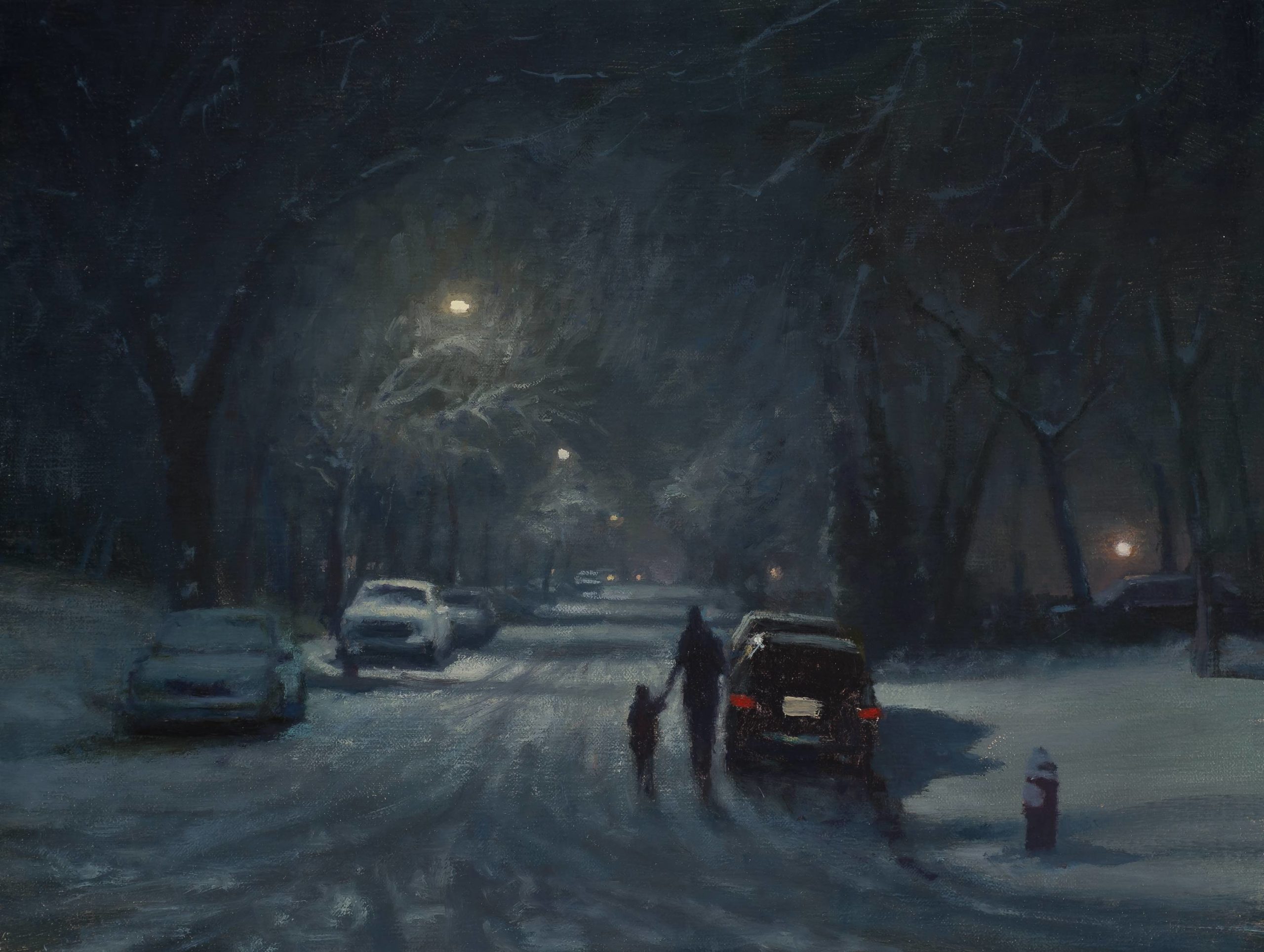
Into the Darkness
Bretzke said he has many memorable nocturne painting experiences, “usually related to the camaraderie of venturing out in the darkness with like-minded painting friends.”
He went on to tell us about a pleasant experience at the Door County Plein Air Invitational, when he and friends were painting from a hill overlooking the town of Ephraim, Wisconsin. “The weather was perfect and the late dusk sky over Lake Michigan was inspiring by itself but then the lights of an iconic diner came on and, in combination with passing car lights, added even greater interest to the painting. I was mesmerized. I vaguely remember people watching and talking to me but I couldn’t tell you a thing that was said.”
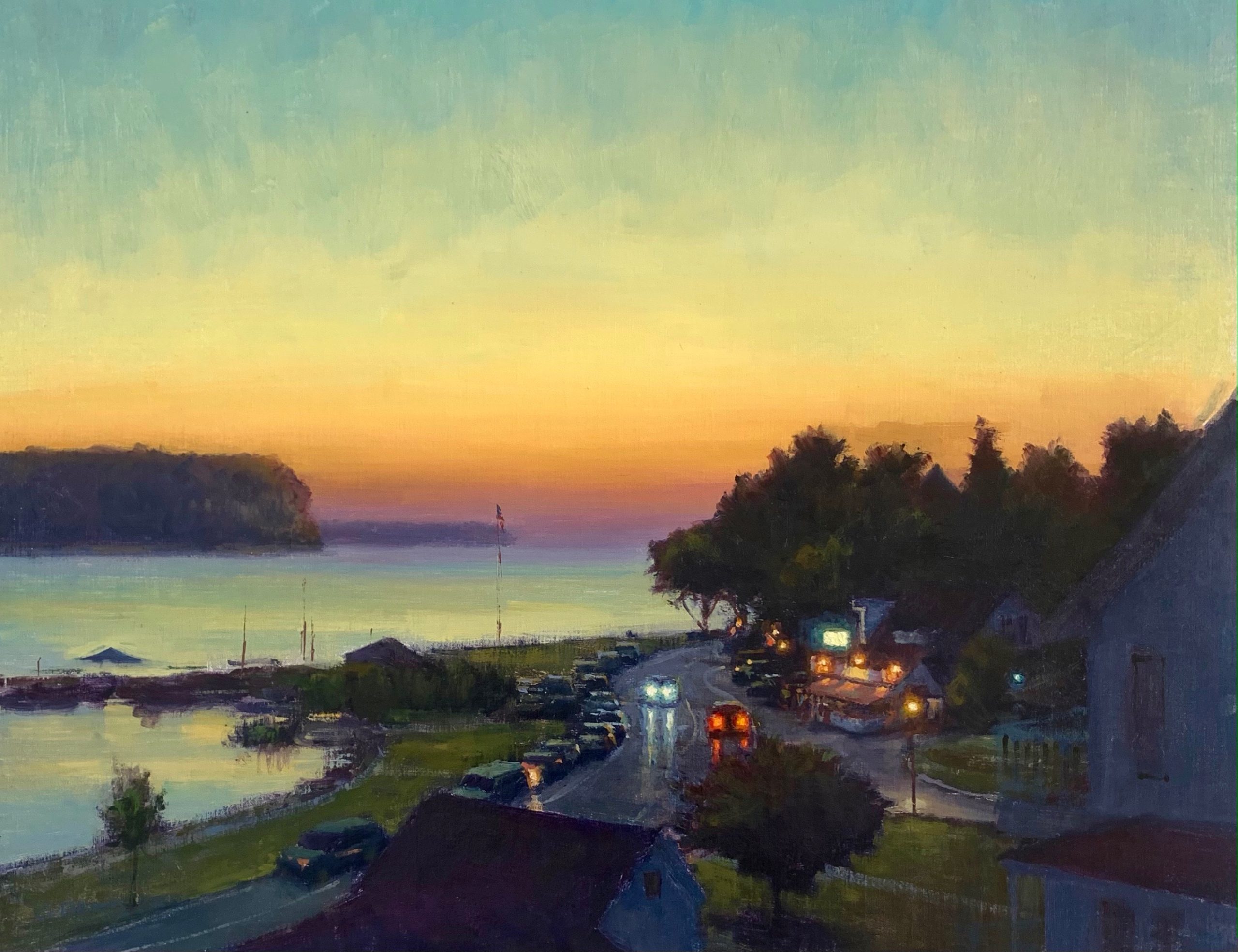
Dreamliners Who Paint Nocturnes en Plein Air
“I like painting nocturnes because it is invigorating to try new things and challenge myself to grow as an artist,” said Katy Smith. “Lighting is by far the biggest challenge I face when I paint at night. I prefer to find a well-lit spot outside a storefront or below a street lamp rather than bring my own light. I really like being around others if I am painting at night for safety reasons, so I find a busy plaza with outdoor entertainment or get an artist friend to join me.”
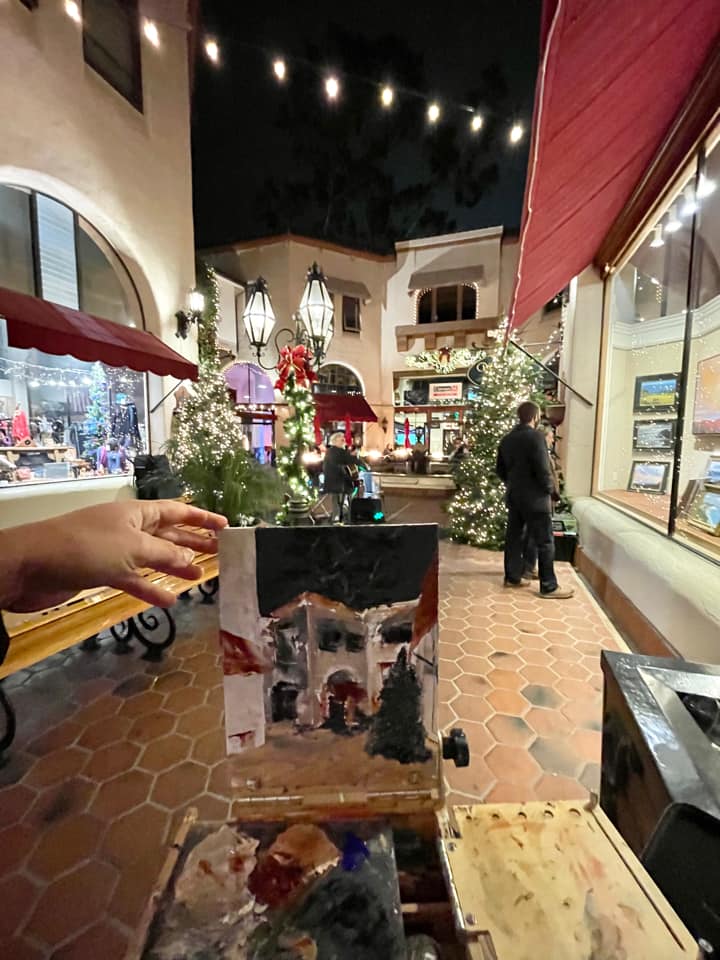
“I have done a few nocturnes, one in pastel … and several others in acrylic,” said Susan Daily Cfre. “What I love about nocturnes is how the darkness gives a poignancy to the light and makes colors dramatic by default, like a bed of jewels on a velvet background.”
“I have painted very few nocturnes but they intrigue me,” said Sue Schneider. “I am interested in doing more but for several reasons haven’t been brave enough to try. For my most recent attempt to overcome all my fears I put up my plein air easel in my living room and painted my neighbor’s yard.”
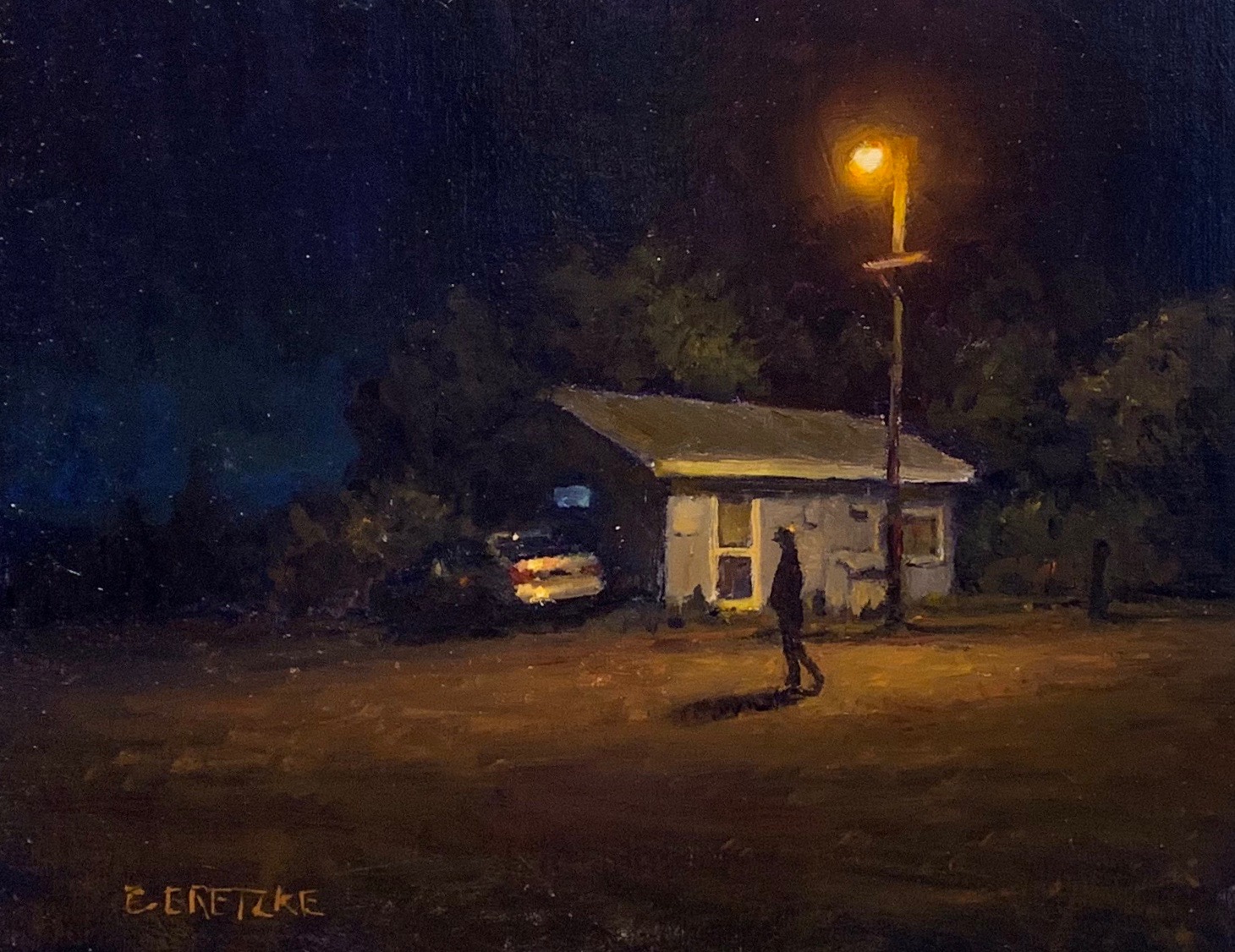
For over 18 hours of instruction on painting nocturnes and sunsets, be sure to check out Carl Bretzke’s PaintTube.tv workshops here. And learn from him live, in person at the 10th Annual Plein Air Convention & Expo, May 21-25, 2023 in Denver, Colorado!
Visit EricRhoads.com to find out all the amazing opportunities for artists through Streamline Publishing, including:
– Online art conferences such as Plein Air Live
– New video workshops for artists
– Incredible art retreats
– Educational and fun art conventions, and much more.
> Subscribe to Plein Air Today, a free newsletter for artists
> Subscribe to PleinAir Magazine so you never miss an issue




